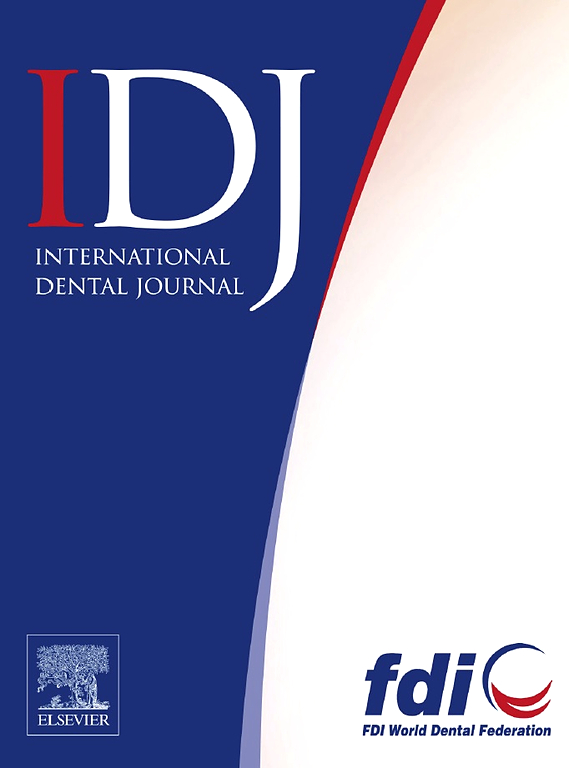Asarum sieboldii, a Potential Ethnomedicinal Herb in Dentistry and Oral Health
IF 3.7
3区 医学
Q1 DENTISTRY, ORAL SURGERY & MEDICINE
引用次数: 0
Abstract
Asarum sieboldii, a species of wild ginger native to East Asia, has long been recognised as an important herb in Asian traditional medicine. It has been applied in the treatment of toothache, cough, asthma, and sinusitis. A. sieboldii has gained global interest because it offers solutions to multiple health concerns. The plant is renowned for its anti-inflammatory, analgesic, antimicrobial, antifungal, and antioxidant properties. Its roots exhibit a wide range of biological and pharmacological effects. The plant contains several chemical constituents, including methyleugenol, 3,4,5-trimethoxytoluene, and safrole, which contribute to its medicinal benefits. Whereas literature search highlights the potential application of A. sieboldii in herbal medicine, to date its application in dentistry remains largely unexplored, with the existing literature vastly fragmented in various sources. This review therefore, provides a comprehensive overview of the potential application of A. sieboldii in dentistry and oral health. The plant shows considerable promise and appears to be effective for managing common oral diseases such as tooth decay, periodontal diseases, toothache, oral cancer, oral ulcers, and gingivitis. Its ability to inhibit nitric oxide release, along with its neuroprotective effects, further enhances its potential for relieving pain and inflammation. With these therapeutic benefits, A. sieboldii presents a promising natural alternative or a complementary option to conventional dental treatments, capable of addressing a wide range of oral health conditions. The findings from this review could serve as a solid foundation for future research, supporting the development of high-quality, safe, and effective A. sieboldii–based products in dentistry and oral health.

三叶细辛:一种潜在的牙科和口腔保健民族药
三叶草细辛是一种原产于东亚的野生姜,长期以来一直被认为是亚洲传统医学中的重要草药。它已被用于治疗牙痛,咳嗽,哮喘和鼻窦炎。三叶草引起了全球的兴趣,因为它为多种健康问题提供了解决方案。这种植物以其抗炎、镇痛、抗菌、抗真菌和抗氧化特性而闻名。其根具有广泛的生物学和药理作用。该植物含有几种化学成分,包括甲基丁香酚、3,4,5-三甲氧基甲苯和黄樟酚,这些成分有助于其药用价值。尽管文献检索强调了三叶草在草药中的潜在应用,但迄今为止,其在牙科中的应用在很大程度上仍未被探索,现有文献在各种来源中大量分散。因此,本文综述了三叶草在牙科和口腔健康方面的潜在应用。这种植物显示出相当大的前景,似乎对治疗常见的口腔疾病有效,如蛀牙、牙周病、牙痛、口腔癌、口腔溃疡和牙龈炎。它抑制一氧化氮释放的能力,以及它的神经保护作用,进一步增强了它缓解疼痛和炎症的潜力。有了这些治疗益处,三叶草提出了一个有前途的天然替代或补充选择,以传统的牙科治疗,能够解决广泛的口腔健康状况。本综述的研究结果可为今后的研究奠定坚实的基础,支持开发高质量、安全、有效的以西博地菌为基础的牙科和口腔保健产品。
本文章由计算机程序翻译,如有差异,请以英文原文为准。
求助全文
约1分钟内获得全文
求助全文
来源期刊

International dental journal
医学-牙科与口腔外科
CiteScore
4.80
自引率
6.10%
发文量
159
审稿时长
63 days
期刊介绍:
The International Dental Journal features peer-reviewed, scientific articles relevant to international oral health issues, as well as practical, informative articles aimed at clinicians.
 求助内容:
求助内容: 应助结果提醒方式:
应助结果提醒方式:


